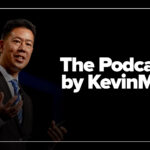Sickle cell disease (SCD) is frequently referred to as an invisible disease and is often overlooked due to a lack of research and overall resource shortages resulting in substandard clinical care. Part of the problem is difficulty objectively identifying SCD characteristics due to lack of laboratory markers and poor objective pain indicators. This disease mainly affects African American populations. Systemic marginalization of stigmatized populations results in less funding; and therefore, less research with fewer clinical advancements. Potential solutions must address multiple variables.
Training as a pediatric resident in New York City, observation of skilled mentors and experiential learning produced valuable insights. One difficult lesson came with the awareness that stereotypical assumptions limit clinical outcome potentials. The stigma and implicit bias that African American children and their families face when hospitalized are routine daily occurrences.
Many children and adolescents arrive in the emergency department to control a pain crisis. Frequently, staff erroneously believe that SCD patients ask for narcotics because “they are addicted.” It was overheard during initial intake that “these children are used to the pain.” Highly skilled providers incorrectly believe that regular over-the-counter pain relievers “would not work”; therefore, easy-to-obtain, safe, cost-effective medication is not suggested for pain relief.
It has been shown that less experienced residents at an urban pediatric medical center expressed more concern about potential addiction. Barriers to SCD acute pain management, as well as attitudes toward patients with SCD, indicate need for additional training. Provider-to-patient communication barriers lead to mistrust, ultimately leading to undertreatment of pain and inadequate care.
Clinical aspects of SCD
Sickle cell disease is a genetic condition with abnormal hemoglobin. Most carriers are African American (1 in 12), with fewer Hispanic (1 in 100), Middle Eastern, or Indian descent. Black Americans are disproportionately affected by SCD with 1 in 400 in Black populations and 1 in 19,000 in Hispanic populations.
Sickle cell disease is an autosomal recessive disorder caused by mutations in the HBB gene, which encodes the β-globin subunit of adult hemoglobin (HbA, α2β2). The most common sickle cell disease mutation causes a homozygous p.Glu6Val substitution, resulting in the production of sickle hemoglobin (HbS, α2βS2). HbS polymerizes at low oxygen concentrations causing sickle-shaped, rigid, fragile red blood cells (RBCs), resulting in microvascular occlusion, hemolysis, and inflammation. Individuals with SCD experience recurrent pain, anemia, multiple organ damage, and early mortality. Signs of this progressive chronic disease appear during the first year of life, usually around five months of age. Symptoms of SCD differ for each person, and complications range from mild to severe. Excruciating pain is typical during crises. Stroke and life-threatening acute chest syndrome are frequently seen complications.
Management of SCD primarily focuses on prevention strategies. Lifestyle management includes maintaining adequate fluid intake and avoiding extreme temperatures. Transcranial Doppler (TCD) ultrasound screenings can identify risk of stroke, and blood transfusions can reduce occurrence of stroke in persons identified as at risk. A Centers for Disease Control (CDC) study found that less than half of children and adolescents who have SCD enrolled in Medicaid received the recommended stroke screening. Prevention measures also include standard clinical interventions such as routine childhood vaccinations to prevent infection or other symptoms.
Several medications are available that, if taken regularly, can prevent or reduce the occurrence of pain and minimize serious complications. Medication and intravenous fluids can manage pain crisis. Hydroxyurea can help with treatment of SCD by making red blood cells rounder and more flexible, allowing increased blood flow delivering more oxygen, and consequently, less pain. Less than half of children aged 2–9 years old who have SCD use hydroxyurea, and approximately half of the 10–16 year olds use this medication.
Bone marrow transplantation (BMT) and newly developed gene therapies offer potential treatment options. Children with SCD wait years for a BMT due to a lack of available donors. African Americans have lower registration rates as potential donors; therefore, there is severe under-representation of African American populations in the donor pool. Major barriers are lack of awareness that transplantation saves lives, related costs, lack of donation opportunities, and a reluctance to participate due to a long history of mistreatment and exploitation in medical programs. Significant challenges are due to a lack of HLA-matched stem cell donors. Siblings are preferred donors; however, siblings are not compatible many times because siblings as well as the identified patient have SCD.
Prevention and clinical care are expensive. Hospitalization due to inconsistent preventative and follow-up interventions raises costs. Secondary expenses can include transportation for access to and from facilities, parental time away from work, or paying for caregiver supervision of siblings.
Increasing visibility of sickle cell disease
Increased visibility will expand SCD research funding opportunities to improve diagnostic techniques and treatment options, and encourage development of advanced health care provider training. Raising awareness supports advocacy efforts.
Increased African American participation in donor registry programs gives the greatest hope for a cure for children living with SCD. Effective community outreach addresses common barriers to donor participation and provides general public educational components.
Educational initiatives can increase provider awareness about the importance of language and power inherent in the use of words. Members of the care team should routinely use person-first language to avoid labeling patients by their disease because referring to a person as a condition reduces the human to a disease.
Avoid stigmatizing language. Health care providers must be sensitive to community preferences. Some frequently used phrases are considered offensive, and use should be discouraged. Routinely replace negative words that can inadvertently cause hurt feelings and patient harm.
- Practitioners should avoid the sarcastic “frequent flyer.”
- The offensive “sickler” should never be used when discussing young patients.
Emergency physician use of the term “sickler” was strongly associated with negative feelings toward people with SCD. Every interaction with all patients affected by sickle cell disease should be professional and respectful.
A lack of resources, substandard clinical care, and a dearth of SCD research can be associated with racism. A history of systemic racism can be linked to less funding and therefore less research. Cystic fibrosis (CF) is mostly prevalent in white populations in the U.S. and impacts less than one-third as many people as SCD; there are 30,000 people with CF as compared to 100,000 people with SCD. However, the amount of federal and philanthropic foundation research funding is many magnitudes greater for CF. Significantly, many fewer research articles have been published about SCD as compared to articles about CF.
Conclusions
To improve the quality of life of children with sickle cell disease, health and social disparities must be reduced. It was found that 25 percent of adolescents with SCD described dysphoria associated with perceived racism. Reducing barriers to care can improve quality of life while reducing health care costs and health care utilization rates among people who have SCD.
Improved health care access is a fundamental requirement to improve quality of life. The assessment and treatment limitations associated with sickle cell disease is just one example of many inequities in health care. Longstanding health disparities and systemic marginalization of the people predominantly affected by this condition have made SCD invisible.
Gustavo Rosas Alvarado is a pediatrician. Gail M. Bloom is an occupational therapist and adjunct assistant professor of clinical research and leadership.
















![Catching type 1 diabetes before it becomes life-threatening [PODCAST]](https://kevinmd.com/wp-content/uploads/Design-2-190x100.jpg)
![Why high-quality embryos sometimes fail to implant [PODCAST]](https://kevinmd.com/wp-content/uploads/Design-3-190x100.jpg)

![Treating your bone density like a retirement account [PODCAST]](https://kevinmd.com/wp-content/uploads/Design-1-190x100.jpg)
